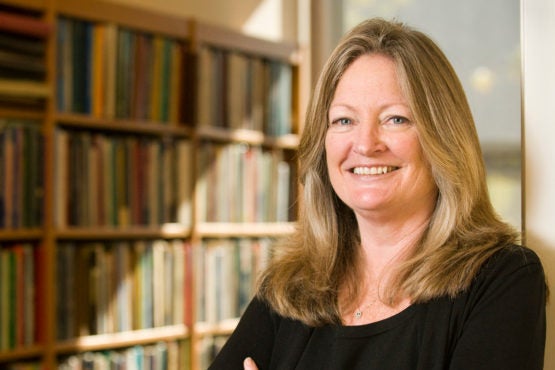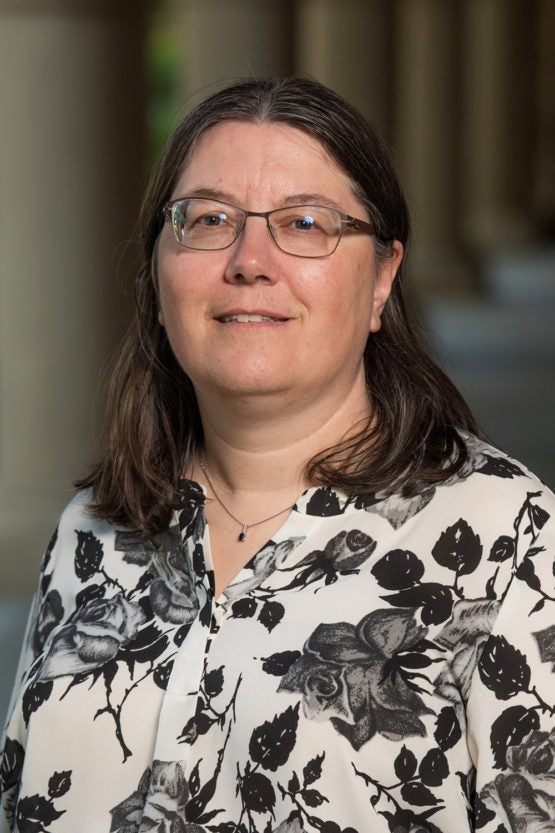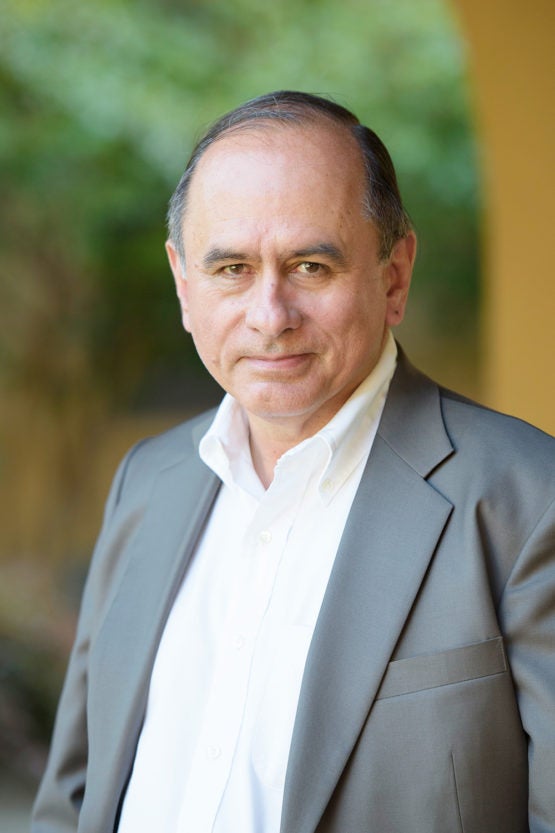Karen Cook, Stanford’s vice provost for faculty development and diversity, to step down; offices to be reorganized
Karen Cook, vice provost for faculty development and diversity, will step down Sept. 30, and Provost Persis Drell has announced a reorganization creating two new offices: the Vice Provost for Faculty Development, Teaching and Learning, and the Vice Provost for Faculty Diversity and Engagement.

Karen Cook will return to teaching in the Department of Sociology after nine years as Stanford’s vice provost for faculty development and diversity. (Image credit: L.A. Cicero)
Karen Cook, vice provost for faculty development and diversity (VPFDD), will step down Sept. 30 after nine years in the position. Under her leadership, the VPFDD office has provided resources and support for Stanford faculty and academic leaders. Following a sabbatical this academic year, Cook will return to teaching in the Department of Sociology.
In light of the leadership transition, Provost Persis Drell has announced that the VPFDD office and the Office of the Vice Provost for Teaching and Learning (VPTL) will be reorganized to create two new offices: the Office of the Vice Provost for Faculty Development, Teaching and Learning (VPFDTL) and the Office of the Vice Provost for Faculty Diversity and Engagement (VPFDE).
New leadership
Sarah Church, senior associate vice provost in VPTL, has been appointed to the new position of vice provost for faculty development, teaching and learning. C. Matthew Snipp, senior associate vice provost of VPFDD, will assume the new position of vice provost for faculty diversity and engagement. The appointments are effective Oct. 1.
Current staff in VPTL’s Center for Teaching and Learning (CTL) will be part of the new Faculty Development, Teaching and Learning office. CTL programming, including services for student learners, TA training and faculty and lecturer programs, will continue within the new structure. Current VPFDD staff members will maintain their focus on both development and diversity projects.

Sarah Church has been appointed to the new position of vice provost for faculty development, teaching and learning. (Image credit: Steve Castillo)
The VPTL office will transition into the office of the vice provost for technology and learning under the leadership of Michael Keller. The office will continue to advance the university’s educational mission with support for technology in classrooms, the Canvas learning management system and global and extended education.
Drell explained the rationale behind the new structure.
“Faculty development is not only about professional skill building and leadership training, it’s also about the improvement of teaching and mentoring skills,” she said. “Bringing all of these functions together under one umbrella will make a stronger and more cohesive faculty development program, while making it easier for faculty to navigate the opportunities available to them. Sarah’s work with faculty and students in VPTL has been exemplary, and I’m looking forward to working with her in this new leadership role.”
“Diversifying the faculty is one of our top priorities at Stanford,” said Drell. “We want to advance this effort by strengthening our diversity programs and increasing access to resources for faculty and academic leadership across the university. Matt’s demonstrated commitment to the university’s diversity goals makes him the ideal leader for this endeavor.”
Cook’s tenure as vice provost
Cook was appointed vice provost for faculty development and diversity in 2010. During her tenure, Cook’s office increased educational opportunities for faculty in areas such as leadership, mentoring, lab management and graduate student and postdoctoral scholar advising. The annual tenure workshop continues to be one of the most popular programs. Many faculty members have taken advantage of the week-long, focused-writing retreats offered by the vice provost’s office; these retreats have yielded a number of grants, articles and books, as well as a Guggenheim fellowship.

C. Matthew Snipp will assume the new position of vice provost for faculty diversity and engagement. (Image credit: L.A. Cicero)
Faculty diversity efforts have expanded in the last few years. Under Snipp’s direction, the vice provost’s office has provided support for search committees and departments, while managing the Faculty Development Initiative and collaborating with Robert Weisberg, special assistant to the provost faculty recruitment and retention, who administers the Faculty Incentive Fund. These programs will continue under Snipp’s leadership, in concert with the IDEAL (Inclusion, Diversity, Equity & Access in a Learning Environment) initiative that is an integral part of the university’s long-range planning effort.
Programs for women in science and engineering – the Faculty Women’s Forum and the Gabilan Fellows, among others – were also expanded during Cook’s time as vice provost.
In addition, the office has conducted workshops for chairs and directors that have brought together campus leaders to discuss pressing issues such as long-range planning, sexual harassment, departmental climate, policy changes, freedom of speech, bias in faculty searches and faculty diversity.
“We’re grateful to Karen for her outstanding leadership and dedicated service for these past nine years,” said Drell. “She and her team have done a fantastic job in ensuring that Stanford recruits, supports and retains the very best faculty. The programs developed under her leadership have served and supported so many faculty and academic leaders across the university and have had a tremendous impact.”
Cook’s university service
Since joining the Stanford faculty in 1998, Cook has served the university in many leadership roles. She is the founding director of the Institute for Research in the Social Sciences (IRiSS) and served as chair of the sociology department (2005-10) and as senior associate dean for the social sciences (2001-05). She has served several terms on the Faculty Senate and been a vital member of a number of advisory committees, including the Diversity Cabinet created by former Provost John Etchemendy, the Provost’s Advisory Board for Appointments and Promotions and most recently, in support of Stanford’s long-range planning efforts.
“I have had the great pleasure of working with administrative colleagues, faculty, deans and chairs from all seven schools in various efforts to increase faculty diversity, provide faculty development programs and to improve support for early-career faculty as well as those most recently tenured,” said Cook, adding, “I have had the opportunity to get to know faculty and staff in many different departments across campus – all of them committed to making Stanford one of the best places to work in higher education.”
